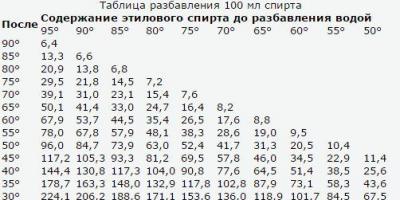Metal jewelry has never gone out of style. Of course, you can easily buy them from folk craftsmen. But what could be more beautiful than a handmade metal rose as a gift to your beloved woman, or a hand-made candlestick presented to friends on the occasion of a family celebration?
How to make a metal flower?
The technology for making a metal rose is not difficult to master. You just need to show patience and practical savvy.
To make metal jewelry by doing the work yourself, you will need a sheet roofing iron, which is better to anneal to give plasticity and softness. Next, you need to mark five star-shaped figures on the metal. Four stars have pointed petals, and the fifth has straight petals. Diameters of circumscribed circles of pointed stars: 12 cm, 10 cm, two 6 cm each. The figure with straight petals has a diameter of 8 cm. Rose
The next step is to make three mandrels cylindrical with base diameters – 1, 1.5, 2 cm. The material of the mandrels can be wood hard rocks or metal. The cut out star is placed on a slab of hard wood or lead. The mandrel is placed along the line connecting the center and tip of the petal. With light blows of a hammer, bend the metal of the petal around the mandrel. All petals are processed in this way. The smaller the diameter of the sprocket, the smaller the diameter of the mandrel you need to take for processing it.
Next, the mandrel with its end rounded end is placed in turn in the center of each sprocket and hit with a hammer. The stars should take a neat cup shape. Using pliers, you need to bend the tips of the flower petals outward at your discretion and desire. For the inner sprocket of the smallest diameter, leave the tips straight. The processing must be carried out in such a way that after its completion all the stars easily fold into each other. Metal flowers, skillfully created with your own hands, can be made not only in the form of a rose, but also any other flower. It all depends on your desire and imagination.
Next step. Cut leaves with embossed veins from metal. As a stem
you can take thick wire. Attach the blanks to the end of the stem and grab them for strength.
To give the flower a finished look color range it must be heated until red, cooled in oil and washed in gasoline. After all these procedures, the product will have a beautiful, very dark shade.
DIY metal candlesticks
A unique candlestick can be made using simple materials and tools:
- a metal strip made of sheet 3 mm thick, 40 mm wide, 400 mm long and a strip of the same metal 20 mm wide and about 500 mm long;
- a piece of metal sheet 2 mm thick, dimensions 100 x 100 mm;
- green paint;
- hacksaw;
- files – flat and round;
- hammer;
- drill with 6 mm drill bit;
- ruler, needle and core for marking;
- for assembling parts.
 Candlestick – sketch
Candlestick – sketch Bracket part No. 1, which will be attached to the wall, is made from a strip with a cross-section of 3 mm x 40 mm and a length of 400 mm. The ornament of your choice is applied along the edge of the workpiece using a round file. A hole is drilled in the strip for hanging on a wall mount. The upper end of the strip can be bent using a hammer, holding the part in a vice.
A piece in the form of a circle is cut out of a sheet 2 mm thick to install a candle. This detail can be decorated with a flower, which is cup-shaped in the manner described in the previous section. A hole with a diameter of 6 mm is drilled in the center of the round part. Souvenirs made with soul and with your own hands require imagination and some skills when working with plumbing tools.
Next, bracket No. 2 is made with a cross-section of 3 mm x 20 mm and a length of about 50 cm. One of its ends will then be attached by welding to bracket No. 1. The second end is cut lengthwise into 100-150 mm. The ends are bent in different directions, they are given an arched shape. The resulting candle bowl is placed on the resulting stand and grabbed spot welding to the stripes.
Now you need to think about how to attach the candle to the candlestick. For this purpose, you need to take a piece of rod with a diameter of 8 mm and a length of 35-40 mm. One end of the 10 mm rod is machined to a diameter of 6 mm. On the second end lathe or using a file to create a point. The end with a diameter of 6 mm is inserted into the hole in the bowl of the candlestick.
After assembling all the parts, the candlestick is painted with metal enamel in a dark green color or patinated. If you like hand-made metal engraving as a decoration, then in a simple way is an electrochemical method that is accessible to everyone.
Curved gratings produced by cold forging
How can you decorate your site with imagination with your own hands? Curly bars, gates, wickets. But if you use products obtained by hot forging, then such improvement can result in a very decent amount. You can, of course, make all these structures from a 4 mm thick strip, bent using primitive devices. However appearance Such grilles, as well as their reliability, leave much more to be desired.
The most optimal is to use equipment that allows you to create parts from a rod with a cross-section of 1 cm x 1 cm and 1.2 cm x 1.2 cm that imitate hot forging products. The resulting products are much cheaper than hot-forged ones, but are also beautiful and reliable.
Various accessories in combination with welding work make it possible to make real patterns from metal by working with your own hands: multi-point spiral curls, a rod or strip twisted along the vertical axis, three-dimensional parts that are used in the production of “three-dimensional” lattices.
Particularly impressive is the figure obtained from square rods 6 mm x 6 mm welded together. It's called a "flashlight". By welding it is possible to obtain from bent method“ ” details periodic patterns “boyar” and “wave”.
Using metal patterned parts, obtained methods cold forging and assembled, you can make gazebos, pergolas, decorations for porches, stairs and canopies. Such shaped metal products go perfectly with all architectural styles and are able to decorate any premises and garden plots.
Everyone knows that metal is a very rough tool, from which, as many people think, it will be very, very difficult to create something elegant and thin! But, in reality, if there is desire and suitable tools, from ordinary metal you can even create an elegant flower, for example, a rose! Bud of this flower it will turn out very beautiful, textured and lush, it will be very similar to its natural prototype. In the created metal flower There will even be metal spikes, which will not be difficult to create. You just need to know some specific subtleties and tricks for working with steel.
Necessary tools and materials to create a metal rose:
- steel thin sheets;
— manual coffee grinder;
— steel rod, 0.6 millimeters and 38 centimeters long;
- hammer;
- pliers;
- a hammer with a very well sharpened edge;
- acetylene burner;
— tig for manual arc welding.
First stage.
Before you start creating a metal rose, you need to create a template of all its constituent elements from paper.
— The very first layer of the rose will be a small bud with three petals. Its diameter should be 7 centimeters.
— The second layer will consist of five petals, the diameter of which should be 9.6 centimeters.
— The third layer of petals will consist of five units with a total diameter of 12 centimeters.
— The fourth and fifth layers will consist of six petals with a circle diameter of 14.4 centimeters.
— The final layer of petals will be five identical petals with a diameter of 9.6 centimeters.
These blanks must be cut out of thick paper.
Second phase.
Then you need to attach all the prepared templates to metal sheet, and transfer them using chalk or soap. In order to use the material most economically, the templates must be applied close to each other.

Third stage.
The next step is to cut out each tier of rose flowers. The remaining trimmings after cutting at this stage There is no need to throw away the work just yet. Such metal scraps will be needed to create flower leaves. Then in the center of each of the resulting blanks you will need to create holes with a diameter of 0.6 centimeters. These holes are necessary in order to string the workpieces onto the stem.


Fourth stage.
After finishing plasma cutting Scale may remain on the edges of the workpieces, which will need to be removed. For this purpose, the components of the flower will need to be passed through a small section of a hand-held coffee grinder.

Fifth stage.
The next step is the process of forming the rose flower. The first two tiers will simply need to be folded, without giving them a particularly realistic texture. This will simply be extra work, since the petals of the bud will be closed and not visible. You need to string the first tier of petals onto a metal rod. Then it will need to be moved to the edge. After this, you will need to heat the petals to the red color of the metal and bend them with pliers and a hammer, and form a dense center of the bud. In order to heat a steel workpiece, you can use an oxygen heating pad clamped in a vice. But in this situation you will need a lot of time. If you want to get the job done quickly, then it is best to use a foundry furnace.

In exactly the same way, you will need to attach a second layer of petals to the stem, which also form a dense central bud.

Sixth stage.
All subsequent layers of petals must continue to be strung in exactly the same way, but their ends must be made more textured. Their wavy curves should be shaped like a natural rose flower.



Seventh stage.
But the layer with rose sepals will need to be folded downwards.
Eighth stage.
Using the method described above, you will need to completely assemble the rose flower, after which you will need to make a weld along the stem, which can strengthen this elegant metal rose.
Ninth stage.
From the remaining metal scraps, you will need to cut the rose leaves and give them the required shape, after which they will need to be welded to the metal stem.
Tenth stage.
The next step is to create thorns on the stem. For this purpose, you will need to turn off the gas for a moment. welding machine. Without the shielding gas, the metal itself will begin to bulge outward. These penetrations must be made along the entire metal stem. The advantage of these metal spikes is that they will not be sharp. In some places it is necessary to heat up the metal rod itself in order to give it the bends typical of a natural rose flower.

That's it, the metal rose is completely ready!

Blacksmithing technology allows you to create a huge list of items. Both tools and household items. But there is another direction - artistic forging, when entire works of art are created. At the same time, various patterns, decorations and even flowers are made from metal.
A forged rose will be an excellent gift or a good training for your skills. How to make it, what techniques and methods exist - more on this later in our material.
If you look for information on making a rose flower from metal using the blacksmith method, you can find many different techniques and techniques. The simplest of them are practically metalwork works with a minimum of forging. But there are also methods when a rose is made from one solid piece, using only forging technologies.
So, in what ways is a forged rose created?
Assembly from individual parts
To make a flower in this way, you will need a minimum of metal working skills. Blanks needed: rod 5-6 mm and sheet steel 1-1.5 mm.
The sheets are cut into blanks in the form of four interconnected petals. You will need 3 of them to get a completely voluminous flower.
Also, a cross in the form of pointed four petals is cut out from this sheet.
The next step is to take a rod, the end of which is heated and riveted. Then they move on to assembly.
Four-lobe blanks are placed on the end of the rod and welded on the outside.
Each of the elements is heated and twisted, gradually forming a flower.
After securing the first petal, all the rest are threaded with a rod from the other end.
When all the petals are installed, put on a cross, and the flower itself is heated and using pliers, give it the required form.
When the final finishing of the metal rose is completed, the flower must be burned and cleaned of traces of slag and burning. Additionally, you can work the stem with thorns and make leaves. The product should look like in the photo
But this method is more technically metalworking and welding than the Kuznetsk method. After all, blacksmithing techniques are practically not used. However, the method is original and easy to implement. Especially for those who do not have the appropriate equipment. How to make a rose using forged metal?
Forging
Forging a rose using this method uses all the skills of blacksmithing and the appropriate tools.
In essence, the basic technology is similar to that described in the previous section with the addition of basic Kuznetsk operations.
You will need rolled stock in the form of a 6 mm rod and 2-2.5 mm sheet steel for blanks for the petals of the future flower.
The rod is heated at one end and the edge is thickened. This can be done by holding it in a vice and using blows from the end to form a thickening.
To conveniently secure the petals around the thickening circle of the rod, you can make a groove with a chisel on the heated metal.
Blanks in the form of petals and crosses are cut from sheet steel in the same way as in the above method.
Each of the petals is pre-forged and thinned at the edges, dispersing the metal. At the same time, you can still create the veins inherent in a natural rose.
Before assembly, you can make thorns on the stem. To do this, you need to make thickenings on the rod using the planting technique, which are then, after securing the stem in a vice, formed into spikes.
Start assembling the flower from the prepared elements.
Each of the four-lobed parts is placed on a rod and welded. In this case, each element must be scrolled, making the desired shape. Also, after assembly, using pliers, give the product the desired volume and contours.
If you wish, you can also attach foliage to the stem. Each leaf is produced using the blacksmith method from a 2 mm steel sheet. A cutting is pulled from it, which is used to attach the element to the stem.
At the end of the work, the flower is cleaned of slag and soot.
You can also do a type of finishing such as bluing. To do this, you will need to apply a thin layer to the product. unrefined oil and heat it in the oven until the applied ingredient is covered with a varnish crust.
As a result of such blacksmithing “floriculture” the following result should be obtained:
Forged from a single piece of metal
This is the most blacksmith's way to make a forged rose with your own hands. To do this, you need a rolled blank: a circle with a diameter smaller than the planned parameters of the flower.
The blank is heated and stretched to a smaller diameter, thus making a stem. However, a part of the edge is left untouched; the future rose bud will form from it.
The workpiece is clamped in a vice and notches are made on the cylinder using undercuts.
After which, petal parts are again prepared from sheet steel, as in the previous two technologies, which are placed on the stem from the cut end. The formation of a bud is done using the same techniques; the element is secured, heated and rolled, obtaining a closed bud.
When all three or four metal parts are installed on the stem, their petals are opened with pliers, giving the desired shape to the forged rose.
To better understand the manufacturing technology, you can watch this video tutorial:
This video perfectly shows blacksmithing technologies for making roses.
What can you add to this material from your own? personal experience blacksmith "floriculture"? To leave your comments, go to the discussion block.
As a birthday gift for your beloved girl, you can give a variety of gifts: perfume, jewelry, flowers, etc. But all this is quite banal and standard.
What if the gift is made of metal? I suggest you do original gift to your loved ones and surprise them with a flower that will never wither.
A metal rose is a great gift for a girl.
Unlike the real thing, it will not lose its beauty over time, but looks dignified and solid.
To make a metal rose I used the following tools:
- A core or punch (if you don’t have one, it doesn’t matter; a weaving nail will do just fine instead);
- Ruler;
- Screwdriver or drill with 5 mm and 3 mm drills;
- Metal scissors;
- A regular hammer (with a narrow back) and a mallet;
- Metal file;
- Propane torch (needed for annealing copper, you can get by with a gas stove);
- Pliers and long-nose pliers;
- Dies M5 and M6;
- Sandpaper (100 / 220 / 500 grit);
Materials:
- Copper sheet 225 by 50 mm, about a millimeter thick;
- Two M6 nuts;
- Steel rod 6 mm (about 20 cm long);




 Now that you have found all necessary tool and materials, it's time to get to work. You can turn on your favorite music, make yourself some tea and start the first step.
Now that you have found all necessary tool and materials, it's time to get to work. You can turn on your favorite music, make yourself some tea and start the first step.
Take a copper sheet and draw 4 squares 50x50 mm and one 50x25 mm on it. Then draw diagonals on each piece and punch a hole where the lines intersect. This is necessary so that the drill does not move to the side while drilling. I usually drill the hole first with a smaller drill bit (3 mm) and only then ream it with a larger one (5 mm). Then file down the rough edges.




 Using metal scissors, cut out all the parts; you should end up with 4 squares with a side of 50 mm and one rectangle 50x25 mm. File the sharp edges and make sure that the steel rod fits snugly into the hole and does not wobble.
Using metal scissors, cut out all the parts; you should end up with 4 squares with a side of 50 mm and one rectangle 50x25 mm. File the sharp edges and make sure that the steel rod fits snugly into the hole and does not wobble.

 Trim all the corners on each part (you need to trim about 5 mm) and on each of the squares make slits perpendicular to each side without cutting about 5-7 mm (the rectangle only has two sides, see photo). Make triangular cutouts at the end of each slot. Using a mallet, level the copper pieces until they are flat again. If the petals overlap each other a little, that's okay, we'll sort that out later.
Trim all the corners on each part (you need to trim about 5 mm) and on each of the squares make slits perpendicular to each side without cutting about 5-7 mm (the rectangle only has two sides, see photo). Make triangular cutouts at the end of each slot. Using a mallet, level the copper pieces until they are flat again. If the petals overlap each other a little, that's okay, we'll sort that out later.










 Now you need to beat off the edges of the blanks so that they become thinner and in the future it will be easier to bend and shape them. After this, turn the hammer over to the other side (pointed) and start making lines along the entire edge of the part (from the center to the edges, see photo). This is necessary to give the petals a beautiful texture. This operation needs to be done only on one side, because during assembly the second side will not be visible, and most likely by starting embossing on the other side you will align the other.
Now you need to beat off the edges of the blanks so that they become thinner and in the future it will be easier to bend and shape them. After this, turn the hammer over to the other side (pointed) and start making lines along the entire edge of the part (from the center to the edges, see photo). This is necessary to give the petals a beautiful texture. This operation needs to be done only on one side, because during assembly the second side will not be visible, and most likely by starting embossing on the other side you will align the other.




 Let's start annealing the copper, this is necessary so that it is soft and flexible when forming the petals. Using a torch or regular gas stove you need to heat the petals until dark red (cherry color). After heating, leave the parts to cool.
Let's start annealing the copper, this is necessary so that it is soft and flexible when forming the petals. Using a torch or regular gas stove you need to heat the petals until dark red (cherry color). After heating, leave the parts to cool.
During firing, oxides are formed - you can polish them or leave them as is - such a rose looks very unusual and beautiful. In general, it all depends on your taste.



 Holding the steel rod in a vice, take an M6 die and cut a thread on it (about 5 cm). To make it easier to cut the thread at the beginning, you can slightly sharpen the end of the rod using sandpaper. Then tighten the nut to the very end - it will serve as a stop for all the petals.
Holding the steel rod in a vice, take an M6 die and cut a thread on it (about 5 cm). To make it easier to cut the thread at the beginning, you can slightly sharpen the end of the rod using sandpaper. Then tighten the nut to the very end - it will serve as a stop for all the petals.


 Now you need to place the petals on the rod. Place the first square petal (with the embossed side up), then the other three, each time turning the petals 45 degrees relative to the previous one. At the very top, secure the rectangular petal and tighten the nut. The photo shows what it looks like.
Now you need to place the petals on the rod. Place the first square petal (with the embossed side up), then the other three, each time turning the petals 45 degrees relative to the previous one. At the very top, secure the rectangular petal and tighten the nut. The photo shows what it looks like.


 Using a hacksaw, saw off the unnecessary piece of the rod, leaving about 5 mm to rivet it. Try not to move the petals; after riveting, you will no longer be able to move them.
Using a hacksaw, saw off the unnecessary piece of the rod, leaving about 5 mm to rivet it. Try not to move the petals; after riveting, you will no longer be able to move them.



 The last step is the most difficult, but also the most interesting. You will need to shape the petals. In a series of photographs you can see how I bend the petals to make a bud.
The last step is the most difficult, but also the most interesting. You will need to shape the petals. In a series of photographs you can see how I bend the petals to make a bud.
If you feel that the copper is fragile, stop, anneal it again - it will be ugly if you tear the petal. After shaping the petals, bend them slightly outward and make curves in the form of a wave.










 Congratulations, you have made a metal rose! For homework I suggest you:
Congratulations, you have made a metal rose! For homework I suggest you:
- Add the sepal (star under the flower) and leaves made from copper sheet;
- Add texture to the stem;
- Insert a small ball of cotton wool soaked in rose essence into the bud to scent the rose.
These are just the ideas that came to my mind, and if you have your own, write about them in the comments. I also ask you to send photos of any metal roses that you have made, I will add them to the article).
Here are some more photos of metal roses:










